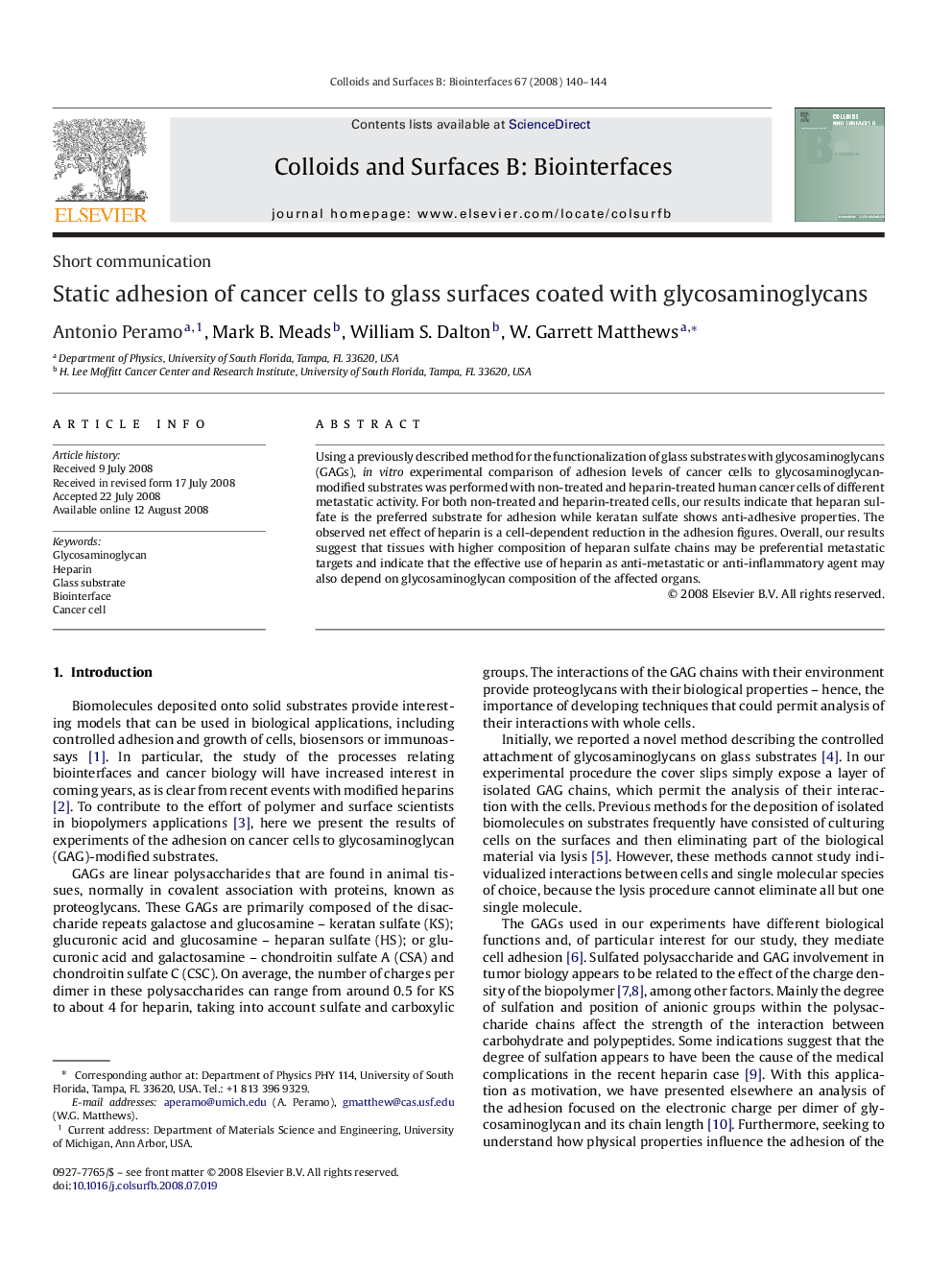| Article ID | Journal | Published Year | Pages | File Type |
|---|---|---|---|---|
| 602067 | Colloids and Surfaces B: Biointerfaces | 2008 | 5 Pages |
Using a previously described method for the functionalization of glass substrates with glycosaminoglycans (GAGs), in vitro experimental comparison of adhesion levels of cancer cells to glycosaminoglycan-modified substrates was performed with non-treated and heparin-treated human cancer cells of different metastatic activity. For both non-treated and heparin-treated cells, our results indicate that heparan sulfate is the preferred substrate for adhesion while keratan sulfate shows anti-adhesive properties. The observed net effect of heparin is a cell-dependent reduction in the adhesion figures. Overall, our results suggest that tissues with higher composition of heparan sulfate chains may be preferential metastatic targets and indicate that the effective use of heparin as anti-metastatic or anti-inflammatory agent may also depend on glycosaminoglycan composition of the affected organs.
